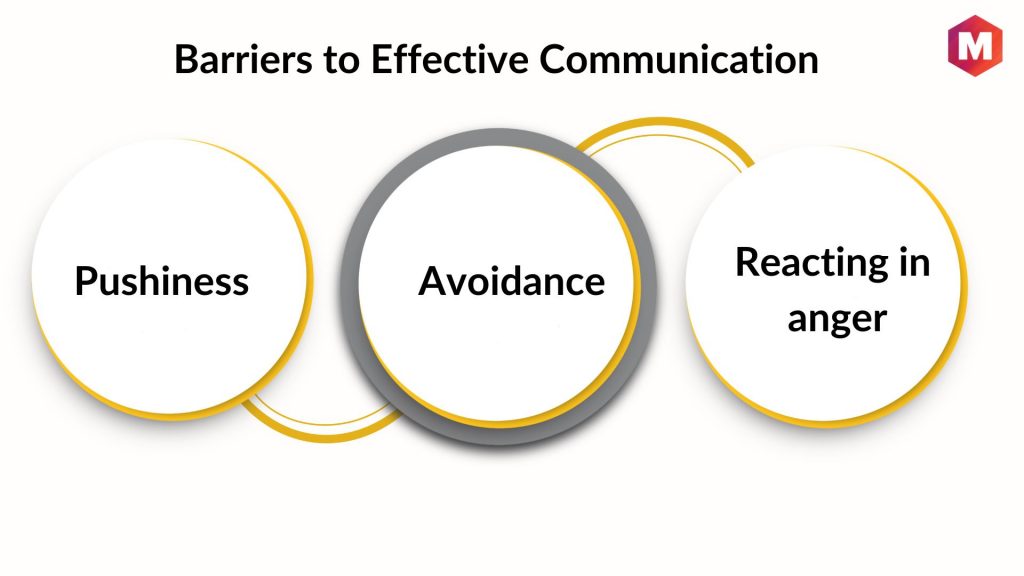
Discover the Types of Communication Techniques That Can Enhance Your Workplace Skills

Discover the 21 most effective communication techniques to enhance your workplace interactions Learn how to be clear, friendly, and open-minded, while actively listening and using non-verbal cues Avoid barriers like pushiness, avoidance, and anger to achieve successful communication
Effective communication requires the use of various techniques by both the speaker and listener. These techniques can be seen as essential skills that are necessary for successful communication.
What are Communication Techniques?
Communication techniques involve the transfer of information, messages, thoughts, or emotions between two or more individuals, either verbally or nonverbally. The ultimate goal is to increase the likelihood of achieving positive outcomes.
Clear and effective communication is crucial for maintaining a positive image and reputation in the business world. Whether it's through written or spoken messages, or even nonverbal cues, it's essential for businesses to uphold a certain standard when it comes to communication. However, for those new to the professional world, mastering this skill can be challenging.
In a formal work environment, employees must possess effective communication skills to succeed. This includes knowing how to interact with different individuals, whether they be team members, superiors, or clients. Failing to communicate effectively can hinder one's career growth and success.
Therefore, for better communication, some techniques can help a person interact or communicate effectively.
What is Effective Communication?
In order to achieve success in the workplace, effective communication is essential. This involves the exchange of information between two or more individuals with the aim of reaching a common goal. To ensure effective communication, it is imperative that employees are able to comprehend the message being conveyed, as well as understand the appropriate timing and method of delivery.
Communication can take on various forms, including verbal and nonverbal cues. Verbal communication involves the use of words, whether spoken or written down, such as active listening and expressing ideas. Nonverbal communication, on the other hand, involves the use of physical gestures and facial expressions to convey messages. Effective communicators have the ability to interpret and respond to both verbal and nonverbal cues appropriately.
List of Effective Communication Techniques
There are some communication techniques that a person should know for achieving success in his work. These techniques include:
1. Be clear while communicating
It is essential to communicate information clearly within an organization. This means ensuring that facts and sources are clearly stated and only critical information is shared. Avoid including unnecessary details or embellishments around the critical information.
2. Stay Available
Availability is a crucial component of effective communication within an organization. Regardless of one's position, being accessible and open to communication is essential for fostering strong relationships and achieving success. In fact, top management and bosses who prioritize availability and are willing to assist other members set successful organizations apart from the rest. Therefore, if you want to excel in your organization, it's important to prioritize availability as a key part of your communication strategy.
3. Stay Friendly
Strengthening interpersonal relationships at work can greatly enhance communication. Building a friendly rapport with colleagues can make it easier for them to approach and communicate with you. When employees feel comfortable opening up to one another, it creates a positive and supportive atmosphere within the organization.
4. Active Listening
It is crucial to actively and attentively listen in order to avoid misunderstandings. This may seem like a straightforward approach, but it can be challenging to execute in practice. To effectively listen, one must eliminate distractions such as electronic devices or other obligations and focus solely on the speaker and their message.
5. Effective Non-Verbal Communication
Verbal communication is often emphasized as the key to success, but it's important not to overlook the significance of nonverbal communication as well. Pay attention to the body language of the person you're communicating with. If they cross their arms, it may indicate disagreement with your point, giving you a cue to adjust your approach and tailor your message to better persuade them. Understanding nonverbal communication is crucial to effective communication.
6. Take Feedbacks positively
It is vital to maintain a growth mindset and embrace feedback as a means to enhance one's skills and performance, regardless of position or level within the organization. Being receptive to constructive criticism and actively working to implement suggested improvements can lead to significant personal and professional growth.
7. Be Open-minded
An open mind is crucial for effective communication as a closed mindset can hinder the process. Without truly listening and comprehending the other person's perspective, it is easy to jump to conclusions and provide an inadequate response. To engage in a meaningful dialogue, one must be willing to consider different viewpoints and remain receptive to new ideas.
8. Using Silence
Silence can be a powerful tool in communication. It allows both the speaker and the listener to pause and reflect on what has been said, and to consider the best way to move forward with the conversation, using appropriate body language.
9. Accepting
Acknowledging and accepting others’ perceptions is a crucial aspect of effective communication. By making eye contact and nodding your head while listening to others, you demonstrate your acceptance of their point of view. This not only empowers your ability to communicate, but also allows you to choose your words more thoughtfully and effectively.
10. Giving Broad Openings
When it comes to communicating with someone who is hesitant, using open-ended questions or providing a broad opening can be an effective technique. By doing so, you allow the person to share their thoughts and feelings in their own way, without feeling pressured or judged. For example, you could say something like "What's on your mind today?" or "How are you feeling about everything?" to encourage them to open up.
11. Seeking Clarification
Seeking clarification is a great way to avoid misunderstandings and establish open communication with the speaker. When you are unsure about the meaning of their words or have questions about their point of view, don't hesitate to ask for further explanation. This not only helps to build trust between you and the speaker, but also ensures that both parties are on the same page and can avoid any potential conflicts or miscommunications.
12. Making Observations
The ability to effectively interact with others involves a keen awareness of their nonverbal signals such as appearance, conversations, demeanor, and inclinations. By skillfully observing these cues, you can determine their preferences and adjust your message accordingly.
13. Focusing
Maintaining focus during communication is a crucial aspect that establishes the foundation for a productive, truthful, and expert conversation. Whether you are speaking or listening, concentration plays a significant role in both oral and written communications, serving as an essential tool to enhance the effectiveness of your message.
14. Using Sense of Humor
In both professional and personal situations, employing a sense of humor can be a remarkably effective communication tool. Rather than shying away from disagreements, using humor alongside hope and respect can prove highly beneficial.
15. Establishing Trust
Establishing trust is crucial in any communication or interaction. When trust exists between a speaker and listener, the outcome of their interaction will always be beneficial. To cultivate trust, it's important to offer a genuine smile, share factual messages or ideas, ask relevant questions, and provide constructive feedback. These actions will enable you to express your thoughts and opinions in an authentic manner.
16. Watch Your Body Language
Effective communication goes beyond just the words we say; it also involves our body language. To ensure your message is received in the intended manner, it's important to pay attention to your expressions, make eye contact, avoid crossing your arms or legs, and refrain from fidgeting. An open and relaxed body language can make all the difference in successful communication.
17. Empathize with others
To establish a personal connection and ensure productive interactions, it's important to possess the ability to empathize. This involves being attuned to the nonverbal signals and body language of others, which can reveal their emotional state. If someone appears excited or happy, it's beneficial to reciprocate those emotions in order to foster a positive dynamic.
18. Read Regularly
Enhancing your written communication skills requires consistent reading. Regularly reading books not only sharpens your ability to communicate effectively but also keeps you up-to-date and enriches your vocabulary. This habit will also refine your word selection when communicating or crafting an article.
19. Show keen interest
Effective communication involves not just what you say but also how you say it. Nonverbal cues, such as maintaining eye contact and using appropriate body language, can convey your interest in the conversation. Additionally, actively listening and asking relevant questions can demonstrate your engagement and affirm the success of the interaction. These techniques are crucial to master in order to communicate effectively.
20. Be concise and clear
Effective professional communication requires conciseness and clarity. Simply talking too much can overwhelm your listener and prevent them from retaining key points. Often, those who tend to over-talk are unaware of how frustrating or annoying their behavior can be. Therefore, it is crucial to learn how to communicate clearly and speak concisely. Avoid overloading your listener with information, as this can not only bore them but also cause them to miss important details.
21. Use the other person’s name
Addressing someone by their name during communication not only demonstrates respect for their opinions and ideas, but also helps to alleviate any potential hesitations and build a foundation of trust. For instance, if you are meeting an introverted individual for the second time and initiate the conversation with their name, it can make them feel more comfortable and at ease when communicating with you.
Barriers to Effective Communication
There are few impediments that will negatively impact your interaction, and therefore you should avoid them. Some of those barriers are-
1. Pushiness
It's important to recognize when a conversation is not productive and to avoid forcing it. Pushing too hard to communicate with someone who is resistant or dismissive can be counterproductive. However, with loved ones, it may be worth revisiting the topic at a later time.
2. Avoidance
It is important to actively listen and engage in conversations, even if they may not seem interesting at first. Dismissing the thoughts and feelings of the speaker can lead to misunderstandings and a lack of connection. Similarly, speakers should be open to the perspectives of their listeners to create a more effective and productive dialogue.
3. Reacting in anger
While taking part in a conversation, if you respond in anger, it might derail the whole process, and that is why anger is considered a pitfall of effective communication.
Conclusion
Using these techniques, you can improve your communication skills both in professional and personal settings, leading to better relationships and successful outcomes.
How important do you consider such techniques in improving the value of your spoken word and interactions?
NEXT
Communication Styles
PREV
Communication Systems
START
What is Communication










